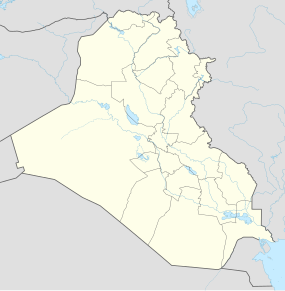Nineveh

The reconstructed Mashki Gate of Nineveh
|
|
| Location | Mosul, Nineveh Governorate, Iraq |
|---|---|
| Region | Mesopotamia |
| Coordinates | 36°21′34″N 43°09′10″E / 36.35944°N 43.15278°ECoordinates: 36°21′34″N 43°09′10″E / 36.35944°N 43.15278°E |
| Type | Settlement |
| Area | 7.5 km2 (2.9 sq mi) |
| History | |
| Abandoned | 612 BC |
| Events | Battle of Nineveh (612 BC) |
Nineveh (/ˈnɪnɪvə/ or /ˈnɪnəvə/; Akkadian: Ninua) was an ancient Assyrian city of Upper Mesopotamia, located on the outskirts of Mosul in modern-day northern Iraq. It is on the eastern bank of the Tigris River, and was the capital of the Neo-Assyrian Empire.
It was the largest city in the world for some fifty years until the year 612 BC when, after a bitter period of civil war in Assyria itself, it was sacked by a coalition of its former subject peoples, the Babylonians, Medes, Chaldeans, Persians, Scythians and Cimmerians. Its ruins are across the river from the modern-day major city of Mosul (which itself emerged from the 5th century BC Assyrian town of Mépsila), in the Ninawa Governorate of Iraq. The two main tells, or mound-ruins, within the walls are Kouyunjik (Kuyuncuk), the Northern Palace, and Tell Nabī Yūnus.
...
Wikipedia

